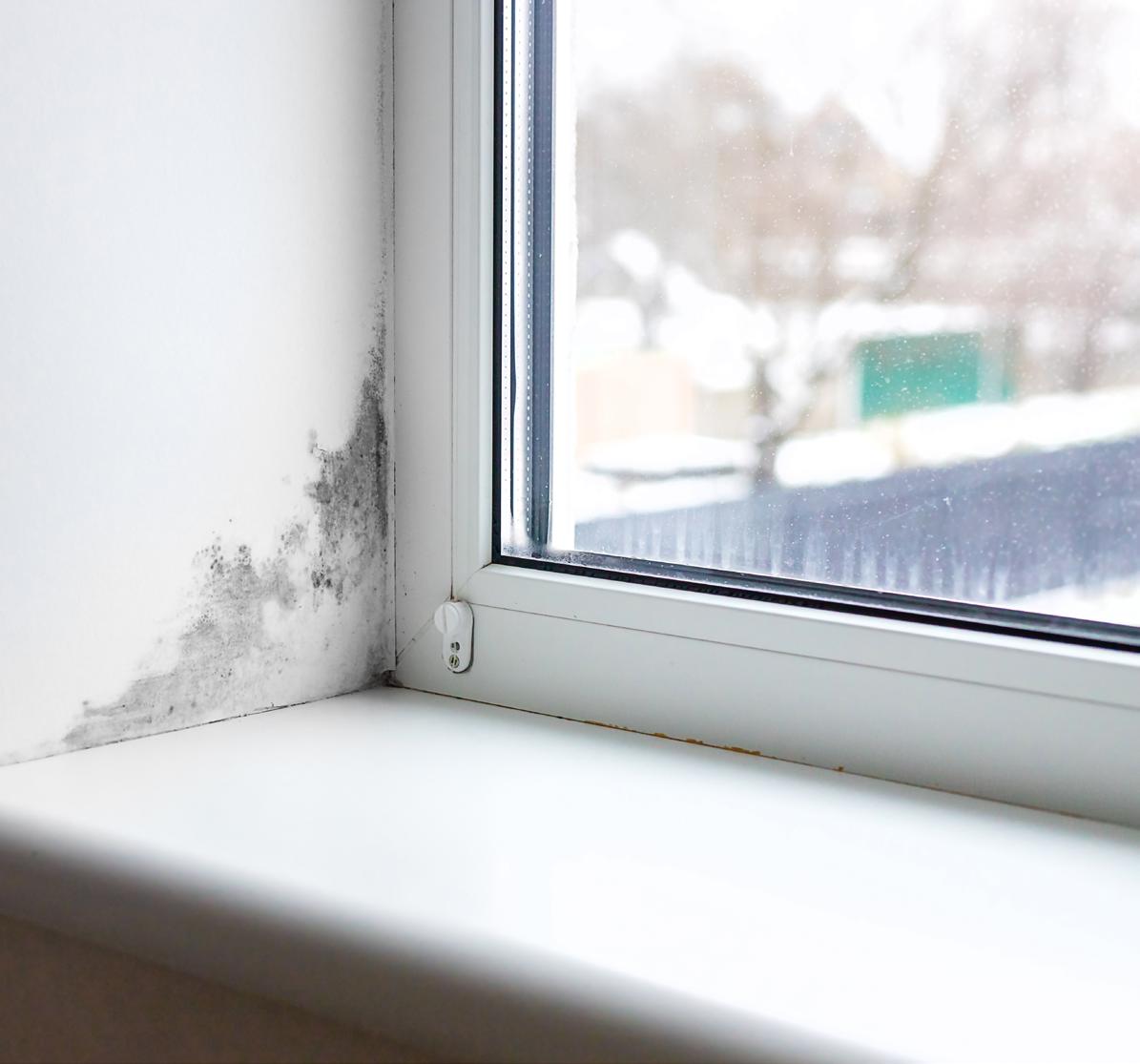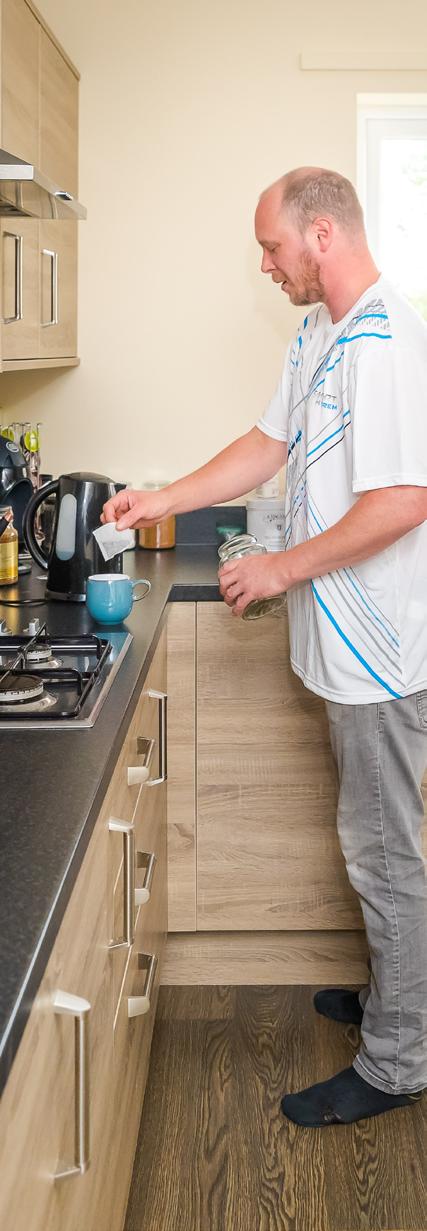

Damp and Mould Policy Statement
1. Introduction
FollowingthepublicationoftheHousing Ombudsman’sSpotlightonDampandMouldand theinquestintothedeathofatoddlerat RochdaleBoroughHousing,theOmbudsman, CastlesandCoastsHousingAssociation(CCHA) andalllandlordshaverevisedourapproachto dampandmould.Thispolicyaimstoprovide informationandguidanceonhowCCHAaimsto refreshandimplementourproceduresinrelation toDampandMould.
TheHousingOmbudsman’sSpotlightonDamp andMouldwaspublishedinOctober2021and followedupwiththeHousingOmbudsman’s ReportonDampandMouldinFebruary2023, andtheMinistryofHousing,Communitiesand LocalGovernment'sguidanceDampandMould: understandingandaddressingthehealthrisksfor rentedhousingproviders,issuedinSeptember 2023andupdatedinAugust2024.
CCHAtakeallreportsofdampandmould seriously.Eachcasewillbeinvestigated,and appropriateactionwillbetaken,inlinewith CCHA'sdampandmouldprocesses.
2.0 Aims and Objectives
2.1 On behalf of its residents, to effectively manage any reports of damp and mould.
2.2 To comply with all relevant legislative and regulatory requirements.
2.3 To ensure that all residents live in a safe and habitable environment at all times.
2.4 To run an effective, reliable, responsive and proactive service in relation to damp and mould.
2.5 To continuously seek to improve performance and implement measures to avoid the occurrence of damp and mould.
2.6 To afford residents the highest levels of satisfaction.
2.7 To engage openly with residents about damp and mould in their home.
2.8 To provide technical expertise via CCHA colleagues and third-party contractors.
2.9 To maintain relevant information and record keeping about the Association’s homes and residents.
2.10 To provide clear and accessible communication in relation to damp and mould.
2.11 To actively engage and highlight areas of potential concern.
2.12 Ensuring there are no barriers to residents accessing and receiving support for cases of damp and mould
3.0 Policy Statement
3.1 CCHA are committed to providing high quality properties that a wide range of residents can call home. The aim of this policy is for CCHA to set out its commitment to fulfilling its statutory obligations and contribute to the efficient and effective management of its housing stock.
3.2 It is essential that residents report any issues to us as soon as possible, in accordance with the resident’s tenancy agreement. It is both the landlord and residents’ responsibility to ensure any issues are reported and dealt with by either making them safe or completing the repair within the agreed timescales.
3.3 It is acknowledged that both CCHA and residents need to contribute to ensure issues with damp and mould do not prevent a property from being a healthy home. CCHA are committed to assessing all reasoning behind any issues and to working with residents to understand all aspects of damp and mould and how any issues can be resolved.
3.4 Further detail on CCHA’s approach to dampandmouldisdocumentedwithin theCCHADampandMouldStrategy, whichisalignedtotheHousing Ombudsman’stenkeyareasoffocus, andalsowithintheCCHAResponsive RepairsPolicy.Dampandmouldforms partofastrategicrisksoismanaged andreportedonassuch.

Background
ThisStrategyhasbeendevelopedfollowingthe publicationoftheRegulatorofSocialHousing’s(RSH’s) initialfindingsondampandmouldinsocialhousing,the HousingOmbudsman’supdatedDampandMould Reportincludingten‘keytests’,thegovernment’s guidanceDampandMould:understandingand addressingthehealthrisksforrentedhousing providers,andtheRSH’snewConsumerStandards, introducedin2024.
Context
TheaimofthisstrategyistoexplainhowCastlesand CoastsHousingAssociation(CCHA)planstoachieve ourgoalsinrelationtothemanagementofdampand mouldanddetailthestepswearegoingtotaketo inform,monitorandundertakeactionstodothis.
Thestrategyissplitintothetenkeytestssetoutby theHousingOmbudsmantoensureweareactively communicatingwithourresidentstoproactively managedampandmouldandacteffectivelywhere dampandmouldishighlighted.
The Strategy will account for the key areas highlighted in the table below.
1 Find your silence
2 Proactive communications strategy
3 Treat residents fairly
4 Improve record keeping
5 Know your residents
6 Check net zero plans
7 Know your homes
8 Dedicated damp and mould strategy
9 Empower staff
10 Use the complaints system to learn
Ten Key Tests from the Housing Ombudsman’s Damp and Mould Report
How we Plan to Meet the Ten KeyAreasofourStrategy
1. Find our Silence
We will:
•Makesurewekeepallofourcommunication channels,suchasourwebsiteandsocial mediapages,up-to-datewithrelevant informationrelatingtocondensation,damp andmould withclearguidancereadily availableonhowtoreportissues
•Askquestionsateverypointofcontact
• Provideclearinformationtoallresidents
•Regularlyassessourrecordstohighlight wherethereareindicatorsthatcould highlightanissue.
o Gascappedproperties
o Rentarrears
o No contact for over 12 months
o Issueswithnoaccessforelectricalor gassafetychecks
o Jobsraisedthatcouldindicateanissue withintheproperty
o Followupcallswheredampandmould haspreviouslybeenidentified
2. Communication Strategy
We have a Communications Strategy and a Customer Service and Engagement Strategy in place to ensure we communicate with our residents in a proactive way. In addition to this and to address the growing concerns around damp and mould we also:
• Runinformationcampaignstohighlightthe causesofcondensation,dampandmould, andtheirpotentialeffects
• Promoteourprocessforreportingconcerns andtheroutewewilltaketoresolvethis
• Provide clear information on the causes of condensation,dampandmouldandthebest waystopreventtheseoccurring
•Activelypromoteworkswehavedoneto reducedampandmouldinproperties
• Takeapro-activeapproach,speakingwith ourresidentsinrelationtocondensation, dampandmouldateveryopportunity
• Followupefficientlyonallreportsofdamp andmouldandkeepresidentsupdatedon progress
3. TreatResidentsFairly
CCHAalreadyhasmeasuresinplaceto ensurethefairtreatmentofallour residentsincludingTenantScrutinyPanels andourResidents’Charter.Inspecific relationtodampandmouldwewillfollow thebelowsteps.
• Ensure all reports of damp and mould follow the same process
• Risk assess on a case by case basis
• Offer support to residents where hardship may be highlighted as an issue
• Report and monitor on all cases referring to damp or mould
• Create an open culture in relation to damp and mould that takes into account every aspect of each case
• Cases followed through to a satisfactory conclusion
4. Improve Record Keeping
• Ensure we keep accurate and up to date records on all of our properties
• We have introduced a specific ‘D&M’ job type which lets us run accurate reports and provides data for us to examine things like specific trends
• We have worked with our IT Team to ensure all information is easily available centrally, in one place
• We have introduced a specific set of KPIs for the purpose of monitoring cases of damp and mould within our homes


5.Know our Residents
We ensure that through regular contact with, and feedback from, residents we have an awareness of:
• Medical conditions
• Vulnerabilities
• Financial concerns
• Family properties with high usage
• Any specific needs or communication preferences of residents, making sure these are understood and acted upon
6.Check Net Zero Plans
CCHA have a “fabric first” based approach to achieving Net Zero. This ensures that works undertaken to meet our responsibilities in terms of carbon reduction do not prevent our homes from remaining healthy.
7. Know our Homes
CCHA carry out a full stock condition survey of all our properties every five years. This enables us to assess key components of our properties and identify where issues may occur or are beginning to emerge.
• We actively look for trends with properties where mould has been highlighted and look to address these issues with planned programmes of work
• We monitor trends in relation to damp and mould and the age of key property components
8.DedicatedDamp andMouldStrategy
Thisdocumentisourdedicatedstrategy
9.Empower Staff
In addition to regular two-way communications with colleagues, we are making sure we:
• Provide relevant training to colleagues
• Provide a clear pathway for colleagues to report concerns
• Offer Chartered Institute of Housing e learning modules relevant to collegues’ roles and monitor completion
10. UseourComplaints SystemtoLearn
Wewanttohearfromallofourresidentsifthey arenotsatisfiedwiththeservicetheyhave beenprovided.Allresidentshavetherightto makeacomplaintiftheyfeelwehaven’tmet theirexpectationsorhavefailedtodeliverone ofthecommitmentsmadeinourResidents’ Charter.Wearededicatedtoresolvingany ssuesquickly,fairlyandtransparently,and toensuringresidentsarekeptuptodateat eachstage.InlinewiththeHousingOmbudsman ComplaintHandlingCode,thisispromoted acrossallCCHAcommunicationchannels. All complaints are tracked and monitored for trends and learning.

Finding our ‘Silent Customers’ Strategy

Background
FollowingthepublicationoftheRegulatorofSocial Housing’sInitialFindingsonDampandMouldinSocial Housing,theHousingOmbudsman’supdatedDamp andMouldReport,includingten‘keytests’inFebruary 2023,thegovernment’sguidanceDampandMould: understandingandaddressingthehealthrisksfor rentedhousingprovidersinSeptember2023(updated inAugust2024), theRSH'snewConsumerStandards introducedinApril2024,andaspartofouroverall DampandMouldStrategy,CastlesandCoasts HousingAssociation(CCHA)instigatedarefreshed drivetoidentifyour‘silentcustomers’.
Context
CCHA has good communication levels with customers through our Customer Service and Engagement Strategy, Communications Strategy, and a robust complaints process.
We are aware of the need to identify and engage with vulnerable customers and have supporting policies and procedures in place to support this including safeguarding, domestic abuse and antisocial behaviour.
We are also making pro-active contact with all residents who currently have their gas capped to identify any additional specific needs.
Customers can currently make contact with CCHA through a variety of methods and we are confident that this will minimise the risk of having ‘silent customers’.
Where we are Currently
A silent customer identification group was convened with the Head of Customer Service and Engagement, Head of Maintenance, Head of Housing and the Business Process Improvement and Intelligence Lead.
Work has been carried out to identify vulnerable and potentially ‘silent’ customers following the appointment of two Tenancy Sustainment and Safeguarding Partners and through our existing damp and mould taskforce.
All customers who make contact with CCHA’s Customer Service Team are asked if they have any outstanding repairs or any other issues relating to their homes and the answer is recorded through the ‘Looking Glass’ function.
Whilst there is an annual gas safety check carried out on all properties with a gas supply by a contractor, we are aware from the Safeguarding report which is presented to CCHA’s Audit and Risk Committee that contractor reporting on concerns was very low. We have worked with those contractors to stress the importance of reporting safeguarding and damp and mould cases and offered dedicated safeguarding and damp and mould training at ‘toolbox talks’.
Objective
Weidentifycustomerswhohavenothad contactwiththeorganisationandgetintouch toensuretherearenoissuesinrelationto dampandmouldaswellasanyotherpossible tenancysustainment/vulnerabilityissues.
Identificationofsilentcustomerscontinues throughseveralroutesincludinggascapped properties,noaccess,nocontactinthe past12monthsandalternativepayment arrangements(APAs)inplacewithnocontact.
AmeetingtookplaceinOctober2024to reviewthemembership,effectiveness andprioritiesofthegroupmoving nto2025. Theaimistore-commencemonthlymeetings toreviewonanongoingbasis.

Priorities
We recognised that we needed to make best use of the data available to identify our potentially silent customers.
Therefore, the group pulled together and reviewed initial system reports to identify the initial pool of potentially silent customers looking in particular at:
• Customers who have not reported a repair within the last 24 months, followed by:
o Customers who have not reported a repair within the past 12 months
o Properties with no CRM in the past 12 months
This data was cross referenced against other key data sources in order to ensure that the most vulnerable customers are targeted first. The key data sources are:
• Gas capped list
o Any properties where the gas is currently capped
• Properties where there is no gas provision and therefore no gas safety check within the past 12 months
• Alternative payment arrangement (APA) in place
o Where an APA has been put in place without successful customer contact
A wider working group carried out a project to contact all residents who had not raised a repair or been in contact in the past 12 months. This is now done on an annual rolling basis.
We have aligned this with our crossdepartmental action plan following the tragic case of the Peabody resident in London and have implemented several measures to mitigate this, including a more robust follow up procedure with the police following a concern for welfare check, and in-person contact with all residents who are placed on an APA for rent payment.
A damp and mould / safeguarding reporting system has been developed. This has been issued to, and proactively discussed with, all contractors with the aim of improving reporting. This includes a dedicated email inbox for damp and mould concerns reporting.
Review
The membership of a review group was agreed and the group met regularly until we were confident that all silent customers had been identified.
Measurement, Evaluation and Ongoing Action Plan
The review group has agreed a monitoring and evaluation process moving forward.

